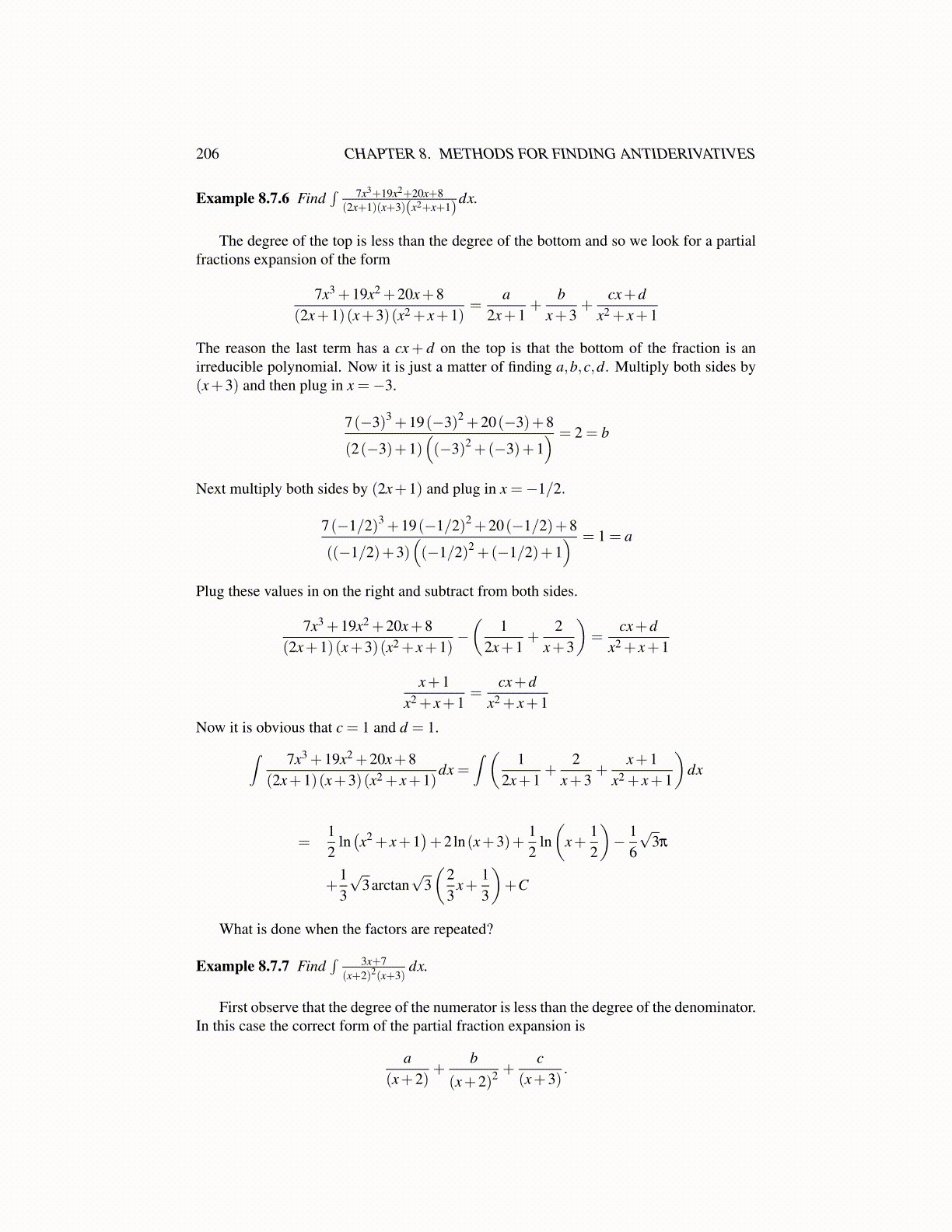
206 CHAPTER 8. METHODS FOR FINDING ANTIDERIVATIVES
Example 8.7.6 Find∫ 7x3+19x2+20x+8
(2x+1)(x+3)(x2+x+1)dx.
The degree of the top is less than the degree of the bottom and so we look for a partialfractions expansion of the form
7x3 +19x2 +20x+8(2x+1)(x+3)(x2 + x+1)
=a
2x+1+
bx+3
+cx+d
x2 + x+1
The reason the last term has a cx+ d on the top is that the bottom of the fraction is anirreducible polynomial. Now it is just a matter of finding a,b,c,d. Multiply both sides by(x+3) and then plug in x =−3.
7(−3)3 +19(−3)2 +20(−3)+8
(2(−3)+1)((−3)2 +(−3)+1
) = 2 = b
Next multiply both sides by (2x+1) and plug in x =−1/2.
7(−1/2)3 +19(−1/2)2 +20(−1/2)+8
((−1/2)+3)((−1/2)2 +(−1/2)+1
) = 1 = a
Plug these values in on the right and subtract from both sides.
7x3 +19x2 +20x+8(2x+1)(x+3)(x2 + x+1)
−(
12x+1
+2
x+3
)=
cx+dx2 + x+1
x+1x2 + x+1
=cx+d
x2 + x+1
Now it is obvious that c = 1 and d = 1.∫ 7x3 +19x2 +20x+8(2x+1)(x+3)(x2 + x+1)
dx =∫ ( 1
2x+1+
2x+3
+x+1
x2 + x+1
)dx
=12
ln(x2 + x+1
)+2ln(x+3)+
12
ln(
x+12
)− 1
6
√3π
+13
√3arctan
√3(
23
x+13
)+C
What is done when the factors are repeated?
Example 8.7.7 Find∫ 3x+7
(x+2)2(x+3)dx.
First observe that the degree of the numerator is less than the degree of the denominator.In this case the correct form of the partial fraction expansion is
a(x+2)
+b
(x+2)2 +c
(x+3).